Choosing the right flooring is a critical decision that significantly impacts the overall look, feel, and functionality of a space. The flooring sets the stage for the entire interior design, influencing everything from aesthetics to comfort and maintenance.
High-quality flooring can enhance a home’s value, provide lasting durability, and complement the style of modern interiors.
Oak has long been a popular choice for flooring due to its strength, versatility, and timeless appeal. Known for its distinctive grain patterns and rich tones, oak flooring can adapt to a range of interior design styles, from rustic to contemporary.
Its durability ensures that it can withstand the demands of daily life, making it a practical and beautiful choice for modern homes.
1. Solid Oak Flooring
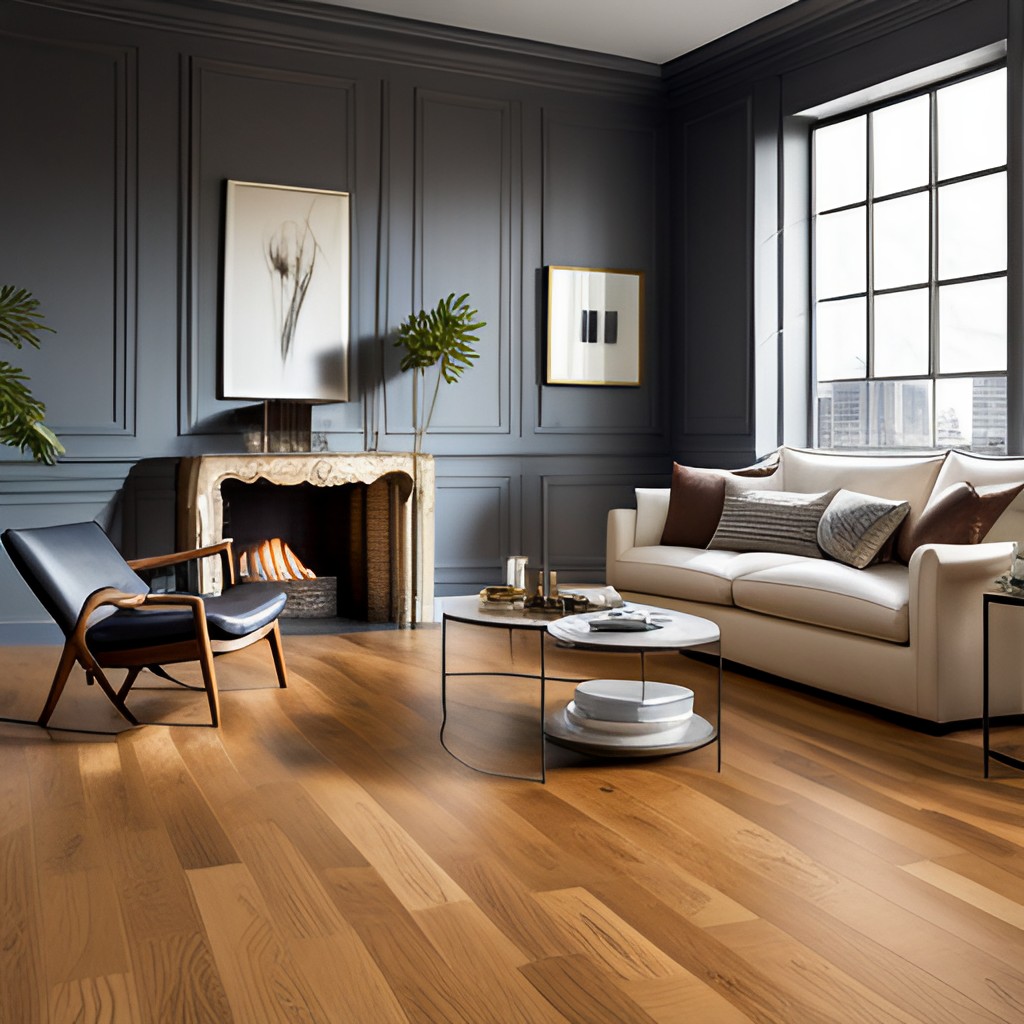
Solid oak flooring is crafted from a single piece of oak, giving it a robust and authentic feel underfoot. Each plank typically measures about ¾ inch thick, providing a firm and stable flooring solution that can endure heavy foot traffic.
This type of flooring is renowned for its timeless elegance, exhibiting natural grain patterns and rich, varied tones that can imbue any room with warmth and character.
Solid oak flooring can be sanded and refinished multiple times, which makes it an excellent long-term investment for maintaining its appearance and resilience. Additionally, it possesses natural insulating properties, helping to keep interiors warm during cooler months.
Advantages and Disadvantages
Advantages
- Durability: Solid oak flooring is exceptionally durable and can withstand high levels of foot traffic. Its strength makes it resistant to wear and tear, ensuring it remains in excellent condition for years.
- Aesthetic Appeal: The unique grain patterns and natural beauty of oak add a sophisticated and timeless quality to any space.
- Longevity: Oak flooring can be sanded and refinished multiple times, extending its life and maintaining its appearance over decades.
- Versatility: Oak complements various interior design styles, from traditional to contemporary, making it a flexible choice for homeowners.
- Added Value: Installing solid oak flooring can enhance a home’s value and appeal to potential buyers due to its high-quality and classic look.
- Natural Insulation: Oak has inherently good insulating properties, helping to retain warmth and create a cozy ambiance during colder months.
Disadvantages
- Cost: Solid oak flooring can be more expensive compared to other flooring options, which may not fit into all budgets.
- Maintenance: While durable, solid oak flooring requires proper maintenance, including periodic sanding and refinishing, to maintain its appearance and durability.
- Susceptibility to Moisture: Oak flooring can be prone to damage from excessive moisture and humidity, making it less suitable for areas like bathrooms or basements.
- Installation: Installing solid oak flooring can be more labor-intensive and time-consuming compared to engineered or laminate flooring options.
- Weight: The weight of solid oak flooring can pose challenges during installation and might necessitate additional structural support in some cases.
- Scratches and Dents: Although robust, solid oak flooring can still get scratched or dented by heavy furniture or sharp objects, requiring careful handling and placement within the home.
Ideal Settings for Use
Solid oak flooring is best suited for areas of the home where foot traffic is moderate to high, such as living rooms, dining rooms, and hallways. These spaces benefit from oak’s durability and ability to withstand regular use while maintaining its attractive appearance.
Oak flooring is also an excellent choice for bedrooms, providing a warm and inviting atmosphere. However, it’s recommended to avoid using solid oak flooring in moisture-prone areas like bathrooms or basements due to its susceptibility to water damage and humidity.
For homeowners seeking a timeless and elegant look, solid oak flooring can also be an exquisite option for home offices or libraries, adding a touch of sophistication and refinement to these environments.
2. Engineered Oak Flooring
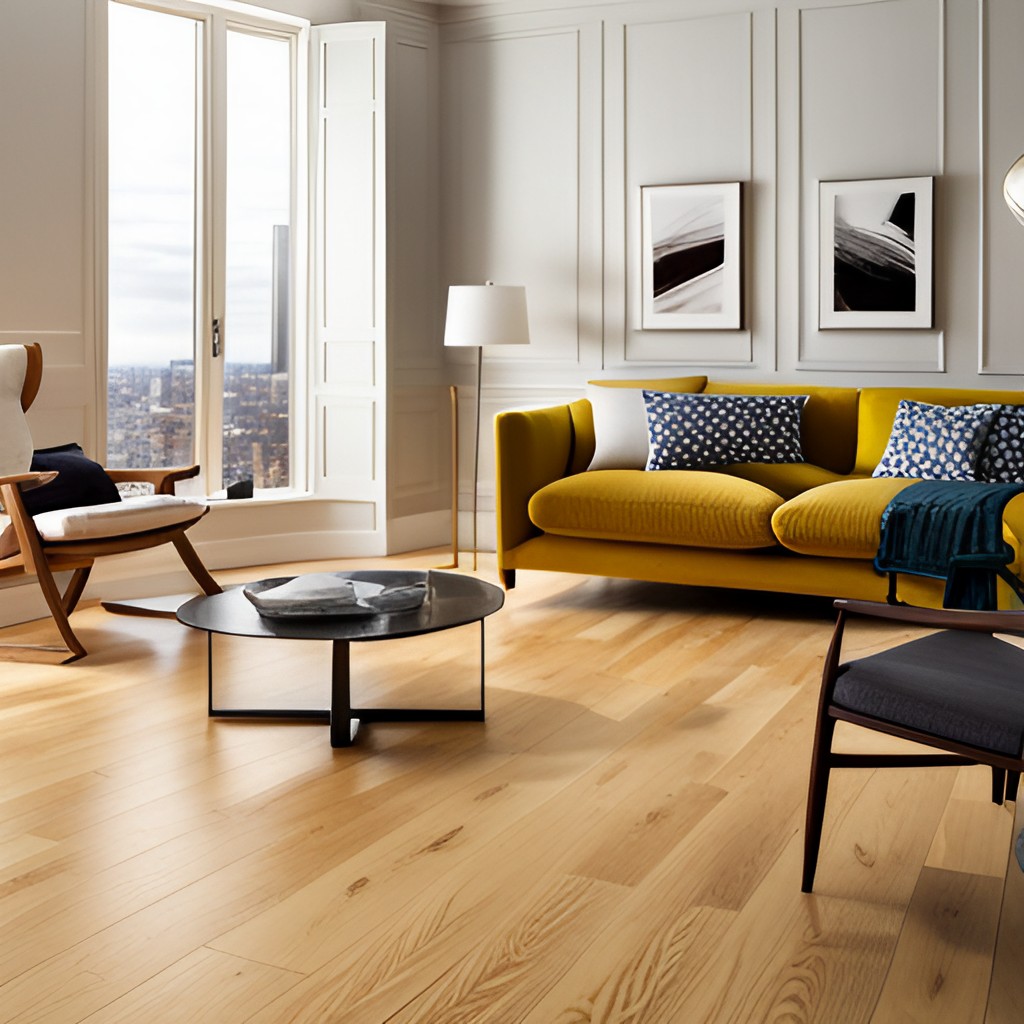
Engineered oak flooring is crafted from multiple layers of wood, bonded together under high pressure. The top layer, known as the wear layer, is made from genuine oak, providing the same aesthetic appeal as solid oak.
Beneath this top layer are several core layers, typically composed of plywood or high-density fibreboard (HDF), which enhance the stability and strength of the flooring.
This construction method not only makes engineered oak more dimensionally stable but also less prone to expansion and contraction due to changes in humidity and temperature.
Pros and Cons
Pros:
- Stability: Engineered oak flooring is more resistant to warping and shrinking compared to solid oak, thanks to its multi-layer construction.
- Installation: It is often easier and quicker to install than solid oak flooring, with options like click-lock systems available.
- Moisture Resistance: Engineered oak performs better in environments with higher humidity levels, such as basements or kitchens, due to its layered construction.
- Cost: Generally, engineered oak is more cost-effective than solid oak while still offering the same high-end look.
Cons:
- Durability: The wear layer on engineered oak is thinner than solid oak, which means it can only be sanded and refinished a limited number of times.
- Authenticity: Some purists prefer the feel and authenticity of solid oak, which engineered oak might lack due to its composite nature.
- Environmental Impact: The production of engineered wood involves adhesives and bonding agents that may have a greater environmental footprint compared to solid oak.
- Lifespan: While durable, engineered oak might not last as long as solid oak due to the limitations in sanding and refinishing.
Suitability for Different Environments
Engineered oak flooring is versatile and well-suited for a variety of environments. It excels in areas where changes in humidity and temperature are common, such as kitchens and basements.
Its enhanced moisture resistance also makes it a suitable choice for use in bathrooms, provided proper precautions are taken to protect it from excessive water exposure.
Additionally, engineered oak can be an excellent option for high-traffic areas like living rooms and hallways, where its sturdy construction can withstand daily wear and tear.
For bedrooms and home offices, it offers the same warm and inviting appearance as solid oak, making it a flexible and practical choice for nearly any space within the home.
3. Parquet Oak Flooring
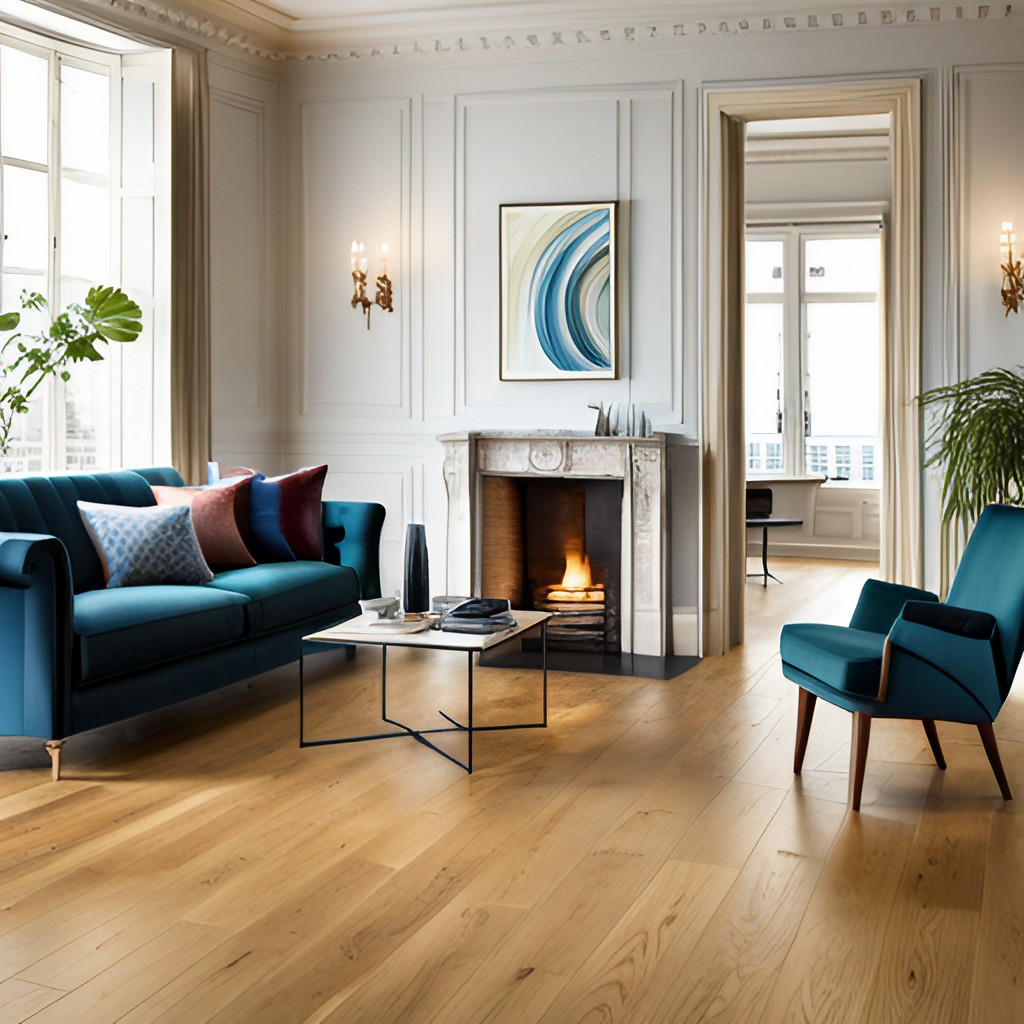
Parquet oak flooring is renowned for its intricate patterns, with herringbone and chevron being among the most popular choices. Herringbone consists of rectangular planks arranged in a staggered zigzag pattern, creating a dynamic and elegant look.
Each plank is placed at a 90-degree angle to the next, forming a distinctive “V” shape. Chevron, on the other hand, features planks cut at an angle to form a continuous zigzag pattern.
This design results in a more streamlined and uniform appearance compared to herringbone. Other patterns such as basket weave and Versailles also add unique visual interest, making parquet flooring a versatile choice for various design styles.
Aesthetic and Functional Benefits
The aesthetic appeal of parquet oak flooring lies in its intricate patterns and timeless elegance. These designs can elevate the look of any interior, adding a touch of sophistication and luxury.
Functionally, parquet flooring is known for its durability and ease of maintenance. The individual blocks used in creating the patterns are typically more stable than larger planks, reducing the risk of warping and gaps.
Additionally, the geometric patterns can help to disguise minor imperfections and wear, ensuring the flooring maintains its beauty over time.
Parquet flooring also provides excellent thermal insulation, contributing to a comfortable indoor environment.
Best Applications in Modern Interiors
Parquet oak flooring is an excellent choice for modern interiors, offering both aesthetic and practical benefits. It is particularly well-suited for living rooms and dining areas, where its decorative patterns can become a central design feature.
In open-plan spaces, parquet flooring can help to delineate different zones, adding structure and coherence to the layout. It is also a popular option for hallways and entryways, creating a memorable first impression.
For bedrooms and home offices, parquet flooring lends a warm and luxurious feel, making these spaces more inviting.
Despite its traditional roots, parquet oak flooring seamlessly integrates into contemporary designs, providing a perfect blend of classic charm and modern functionality.
4. Distressed Oak Flooring

Distressing oak flooring involves various techniques used to artificially age and weather the wood, giving it a rustic, time-worn appearance. This process may include wire brushing, hand scraping, or using tools to create dents and marks intentionally.
Additionally, chemical treatments and staining methods can be employed to give the oak a vintage patina, further enhancing its character and charm.
Unique Visual Appeal and Texture
The unique visual appeal of distressed oak flooring lies in its rich texture and irregularities, which add depth and personality to any room. Each plank features distinctive marks, grooves, and color variations, making the flooring a focal point in interior design.
The intentionally aged look of distressed oak creates a warm, inviting atmosphere and a sense of history that new, pristine wood floors often lack.
Examples of Interior Styles
Distressed oak flooring is a versatile option that enhances various interior styles. In rustic and farmhouse settings, it contributes to a cozy and authentic ambiance.
For industrial-style interiors, the weathered wood pairs seamlessly with metal accents and exposed brick. French country and shabby chic designs also benefit from the antique charm of distressed oak, adding elegance and a lived-in feel.
Even modern spaces can utilize distressed oak to introduce a touch of warmth and contrast against sleek, contemporary elements.
5. Gray-Toned Oak Flooring
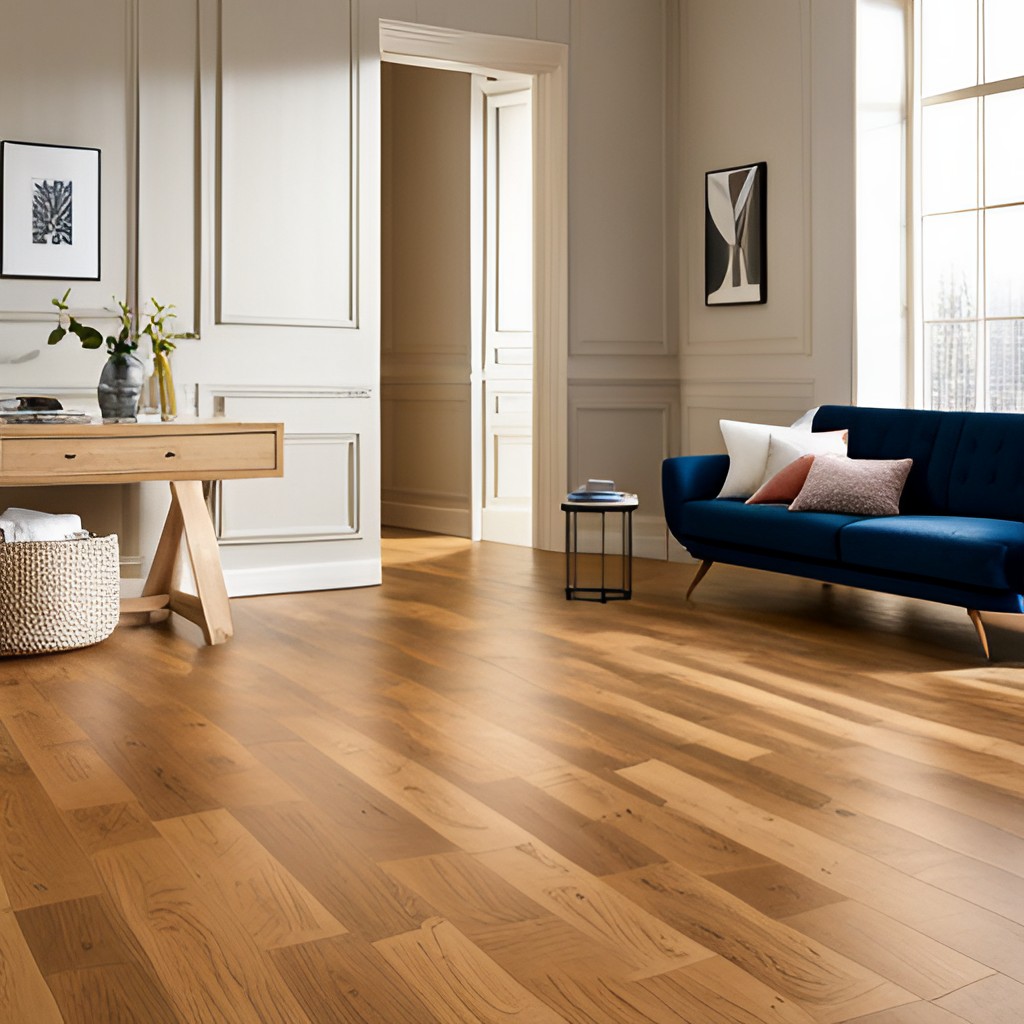
Gray flooring has emerged as a prominent trend in contemporary interior design due to its sophisticated and neutral appeal. This modern hue offers a fresh alternative to traditional wood tones, providing a sleek and versatile base for varied design styles.
With shades ranging from light silver to deep charcoal, gray flooring adds a refined and elegant touch to any space. Its popularity continues to rise as homeowners and designers seek out new ways to create stylish and innovative interiors.
How Gray Tones Enhance Modern Designs
Gray-toned flooring is particularly effective in enhancing modern designs through its understated elegance and ability to complement a minimalist aesthetic. The neutral palette allows for bold statement pieces and vibrant colors to shine without overwhelming the space.
Furthermore, gray flooring often features subtle variations in shade and texture, adding visual interest while maintaining a clean and cohesive look.
This makes it an ideal choice for modern homes where simplicity and sophistication are key.
Versatility and Decor Pairings in Detail
The versatility of gray-toned oak flooring lies in its capacity to blend seamlessly with a diverse range of décor styles. In contemporary settings, gray flooring harmonizes with sleek furniture, metallic finishes, and geometric patterns, creating a cohesive and stylish environment.
In contrast, when paired with rustic or farmhouse décor, gray floors provide a refreshing update that retains warmth and charm.
Additionally, gray flooring complements industrial designs with its cool, monochromatic aesthetic, enhancing raw materials like concrete and metal.
The flexibility of gray floors makes it a timeless choice that adapts beautifully to evolving interior trends.
Related Topics:
Conclusion
Choosing the right oak flooring type for modern interiors involves considering various factors such as aesthetics, durability, and functionality. Solid oak flooring offers timeless elegance and robustness, making it ideal for high-traffic areas but requiring careful maintenance.
Engineered oak flooring provides excellent stability and moisture resistance, along with an easier installation process, making it suitable for diverse environments, including basements and kitchens.
Parquet oak flooring, with its intricate patterns, adds a touch of sophistication and can serve as a striking focal point in living rooms and entryways. Distressed oak flooring, with its aged and rustic appeal, introduces warmth and character to spaces that range from farmhouse to industrial styles.
Finally, gray-toned oak flooring brings a modern, versatile base that enhances minimalist designs and adapts to various décor themes.
Each type of oak flooring has unique advantages and can be chosen to align with the specific needs and aesthetic desires of modern interior designs, ensuring a blend of practicality, beauty, and lasting value.
FAQs
What type of oak flooring is best for high-traffic areas?
Solid oak flooring is ideal for high-traffic areas due to its durability and robustness. However, it requires regular maintenance to retain its appearance.
Can I install engineered oak flooring in my kitchen?
Yes, engineered oak flooring is suitable for kitchens. Its excellent stability and moisture resistance make it perfect for environments prone to humidity and spills.
How do gray-toned oak floors enhance modern interiors?
Gray-toned oak floors provide a versatile and modern base that can complement various design themes, from minimalist to industrial. Their neutral tones add a contemporary touch while adapting to evolving interior trends.
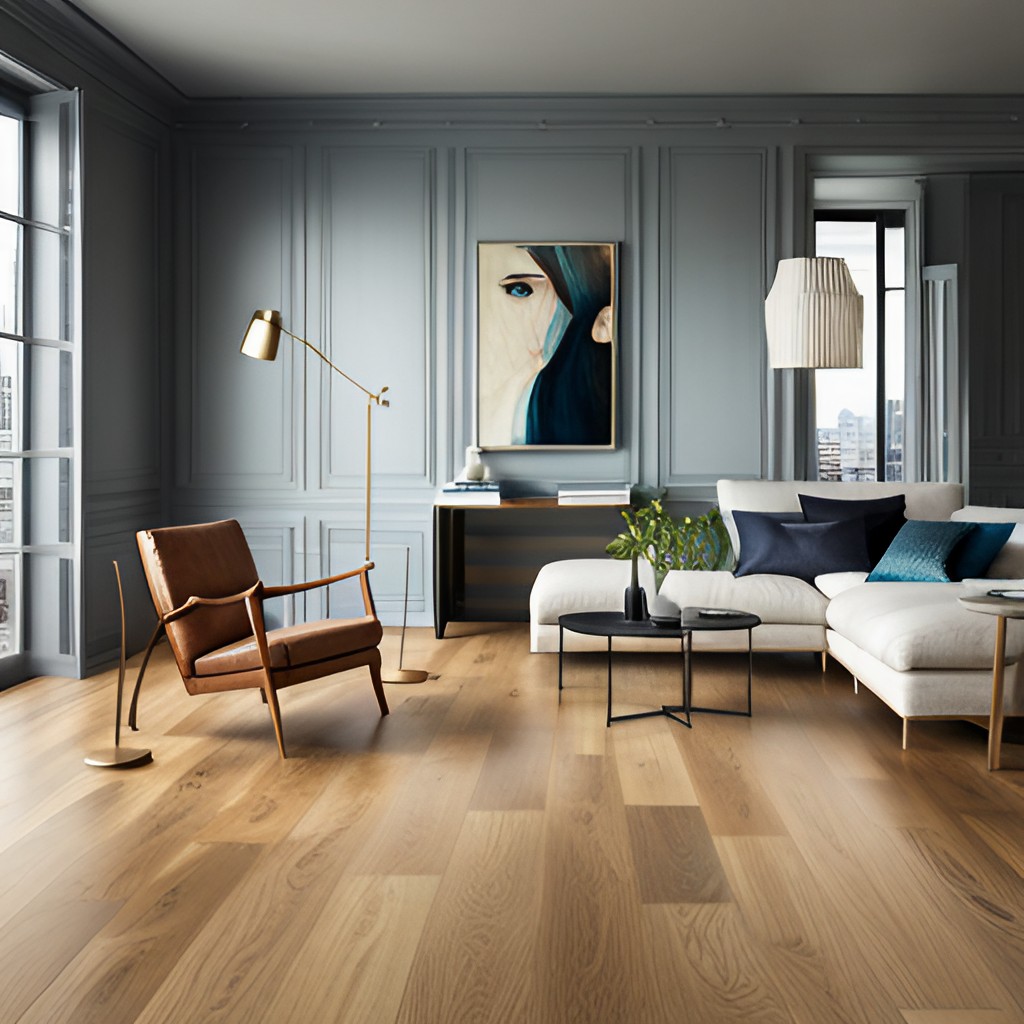
2 thoughts on “Top 5 Oak Flooring Types for Modern Interiors”